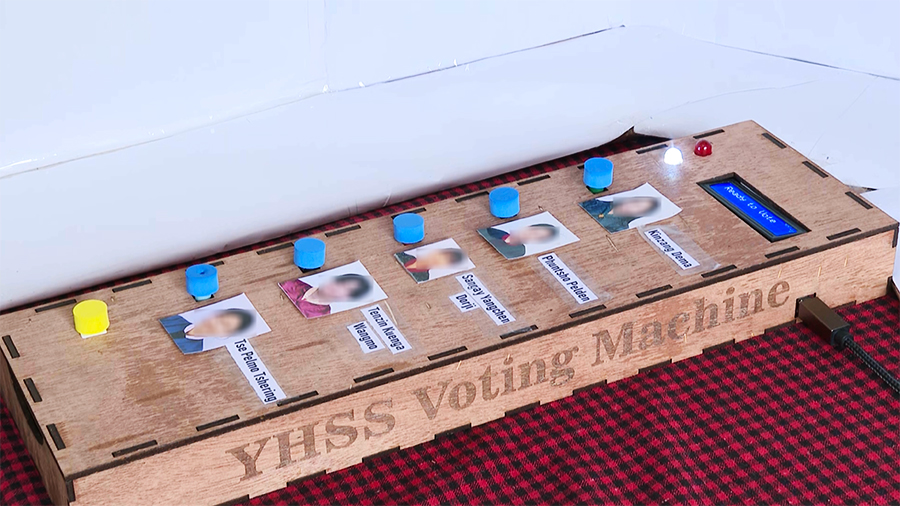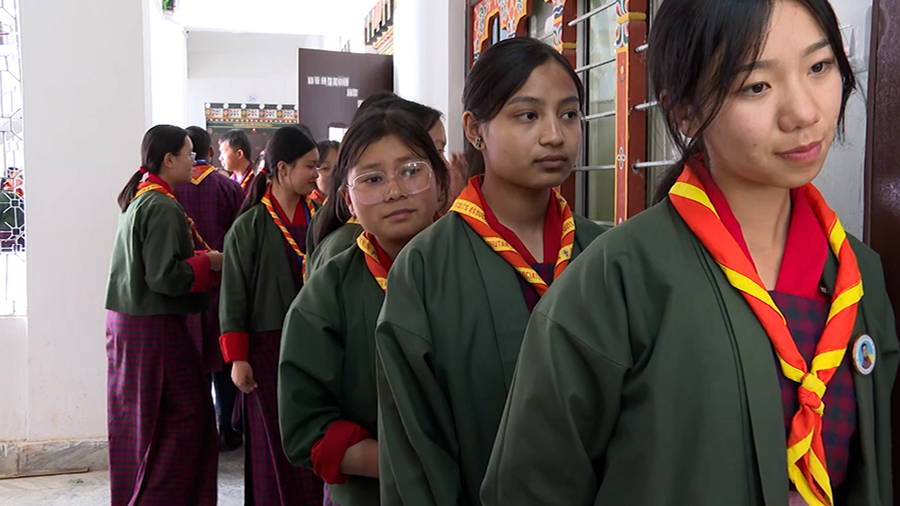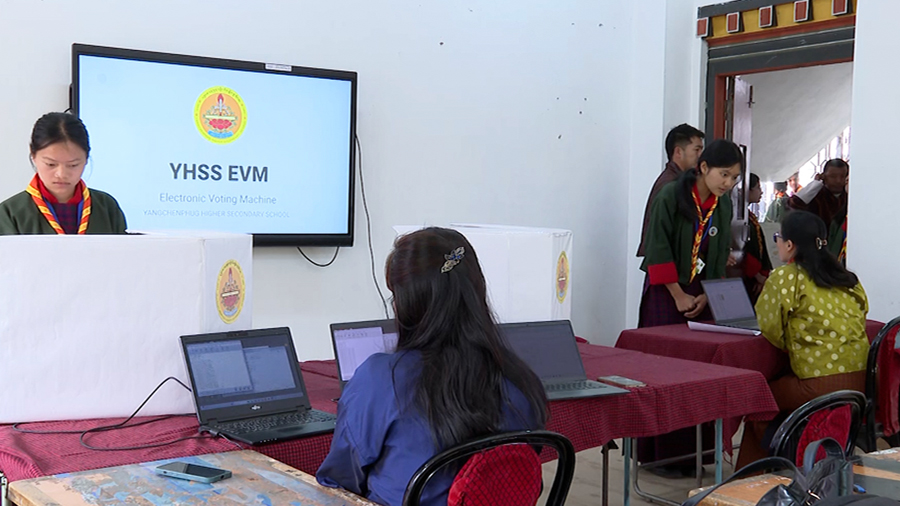 Students at Yangchenphug Higher Secondary School in the capital are using a self-built Electronic Voting Machine, EVM, to elect their student leaders. The students designed and built their EVMs using classroom knowledge and experience from an exchange programme.
Students at Yangchenphug Higher Secondary School in the capital are using a self-built Electronic Voting Machine, EVM, to elect their student leaders. The students designed and built their EVMs using classroom knowledge and experience from an exchange programme.
 It is election day at Yangchenphug Higher Secondary School. Students are lined up, ready to cast their votes for the new school captains.
It is election day at Yangchenphug Higher Secondary School. Students are lined up, ready to cast their votes for the new school captains.
The familiar beep of voting, but this time, from an electronic machine built not by professionals but by their own peers.
 What started as a project by the school’s coding club has evolved into a fully functioning EVM.
What started as a project by the school’s coding club has evolved into a fully functioning EVM.
“Our team found out that the school borrows EVMs from the ECB every year. So, we decided to build one for our school. We actually created a prototype last November, and it received a lot of positive feedback,” said Kuenley Thujee Yangchen, a student who is a member of a coding club involved in developing the EVM.
Kuenzang Lhamo, an ICT teacher said, “They’ve done many projects in the past, but this is one of the first of its kind that’s been successfully built and implemented. We’re really proud of our students’ work and what the Coding Club has achieved.”
The students credit the success to support from the Knowledge Lit Career, or KLiC initiative, an exchange programme supported by the Ministry of Education and Skills Development.
“Unlike the ECB’s EVMs, where votes are saved in the device, our version stores vote records directly onto a computer,” said Sangay Tempa, another ICT teacher.
While the current model is semi-automated, the team has plans to go fully digital, with minimal human interaction.
“We’re building a dashboard that will securely store charts and vote data to prevent malfunctions. The entire communication between the device and computer, and the interface for both operators and voters, will become more efficient,” said Laxmi Prasad Dhakal, another student from the coding club.
The team plans to document the entire development process, aiming to make the system both versatile and replicable in other schools across the country.
A simple coding project is now shaping the future of student leadership and possibly the future of voting
Devika Pradhan
Edited by Sangay Chezom









